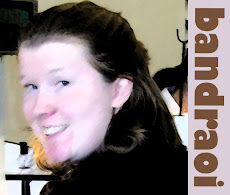Kready, L. A Study of Fairy Tales. Houghton Mifflin Company. 1916.I was very engaged by the concepts laid out in Ms. Kready's first chapter and introduction. The overall goal of this study is to learn more about the nature, structure, and telling of fairy tales, but her focus on using the same in early childhood education was really fascinating. I took some time to look through the Walden University database of articles, and found a few relating to the same topic.
I would like to point out, however, that since 1916 not much progress has been made in terms of using fairy tales to build up a strong foundation for future interest in literature - a lot of the articles I was finding focused on sexism and bias prevalent in fairy tales. While of course these are important issues that should be addressed, I think it is throwing the baby out with the bathwater to dismiss the value of these literary pieces to focus only on these negative aspects.
In that vein, I actually uncovered an article entitled "First Graders and Fairy Tales: One Teacher's Action Research of Critical Literacy" by Ryan Bourke. Not only did this offer a case study of the use of fairy tales to develop literary criticism, it also dealt with some of the negative issues above, as Mr. Bourke discovered when presenting the stories to his class, all of whom were not of European descent.
Bourke offers a good definition of critical literacy, actually quoted from another article entitled "Girls, Social Class, and Literacy".
Critical literacy...is the act of approaching texts wearing a set of eyeglasses through which the reader examines and questions the familiar and comfortable.Especially in its application to fairy tales, I find this definition to be most appropriate. There is very little more comforting than familiar stories from our childhood - but their inherent value comes not only from the 'mug of hot cocoa' response that is very superficial, but from an actual in-depth analysis not only of the story's message, but it's place in the readers time, in the authors time, the influence of the characters and their potentialities, and a number of other factors.
Another article, written by Maryellen Grebin, outlines suggestions for helping kids actively play out fairy tales. Bourke's work focuses mainly on discussion an analysis, but I feel strongly that Ms. Grebin's work also has an important role to play in helping children synthesize the information contained within the stories.
Her suggestions include a "Fairy Tale Museum", where the children are curators of props they bring in themselves to represent the different stories. She also read different versions of fairy tales, from countries all over the world. Many of her students had never before heard the different versions. She also had them grow actual bean seeds as a tool for discussion about Jack and the Beanstalk. They covered topics such as why a lot of fairy tales seem to revolve around girls, and introduced other stories with more of a balanced focus.
However, while this innovative approach is certainly fun and engaging, the addition of Bourke's critical analysis techniques are essential to fostering a truly deeper understanding of the material.
I highly recommend reading Bourke's article, as it includes several conversations amongst his students that really reflect the intensity of the impact that critical analysis of these stories can have on children and their ability to synthesize literature.
Resources:
Bourke, R. "First Graders and Fairy Tales: One Teacher's action Research of Critical Literacy". The Reading TEacher, 62(4) pp. 304-312
Grebin, M. "Fairy Tales Get Real". Teaching Pre K-8. Nov/Dec 2002, Vol. 33 Issue 3, p58


No comments:
Post a Comment